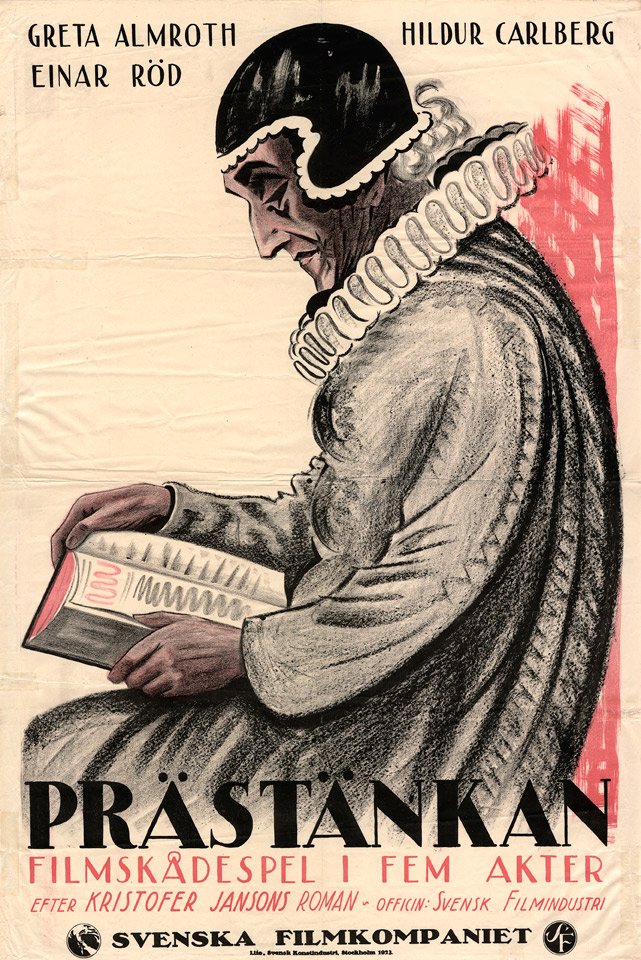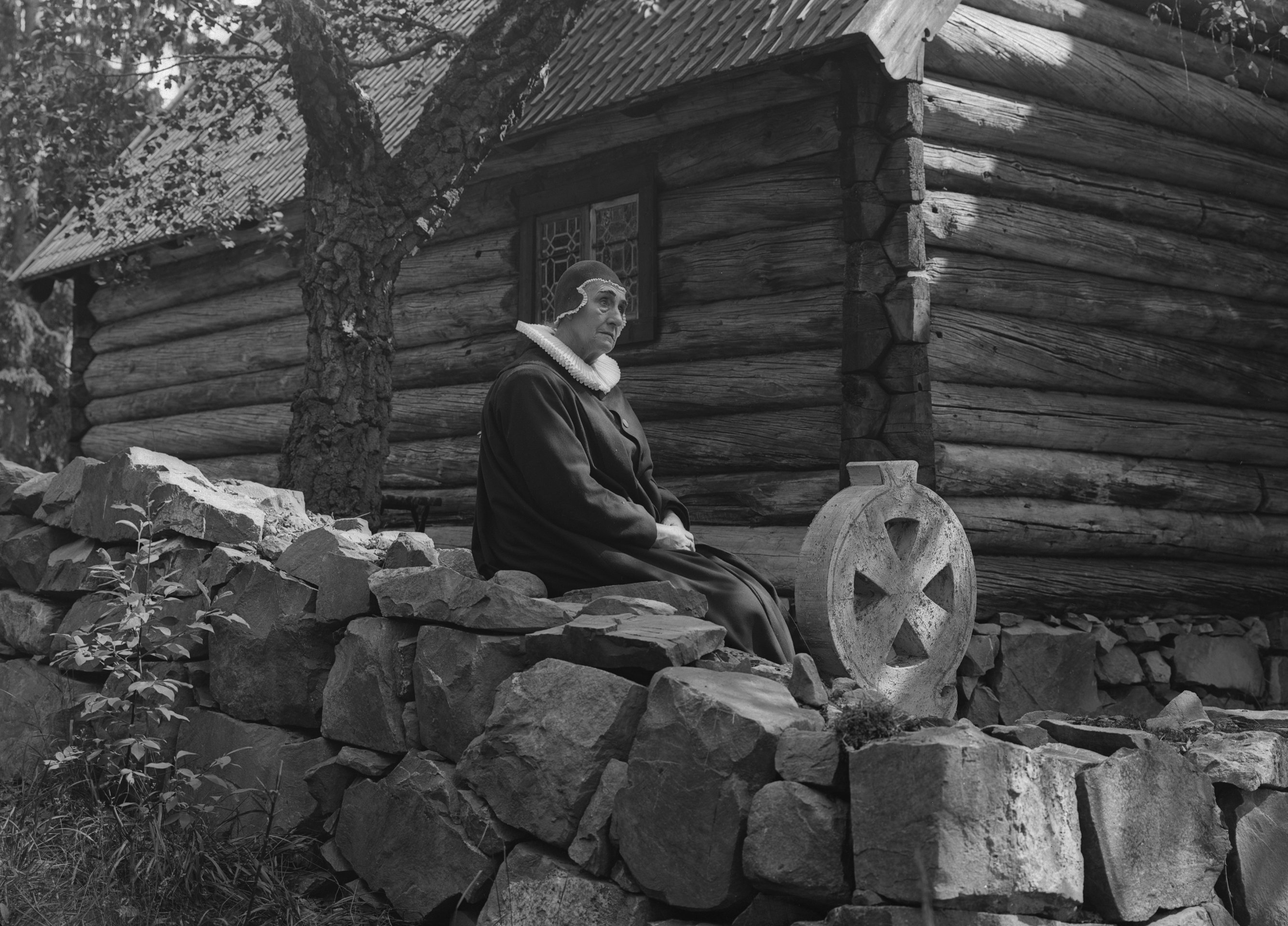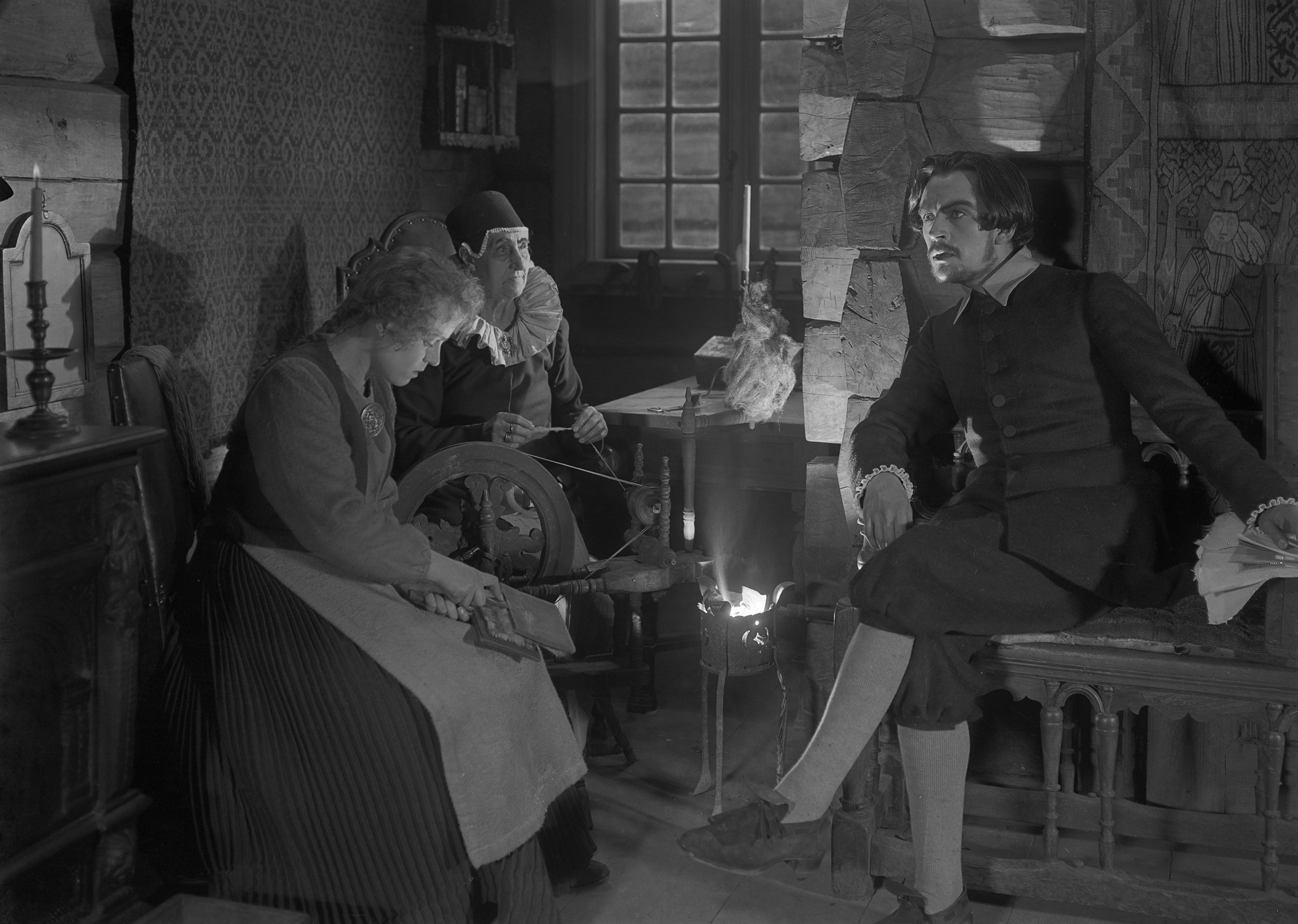
THE PARSON’S WIDOW
The Parson’s Widow
(Prästänkan) (AB Svensk Filmindustri, Sweden, 1920)
dir., script: Carl Theodor Dreyer, based on a short story Prestekonen by Kristofer Janson; photog.: George Schnéevoigt
cast: Einar Röd (Söfren), Hildur Carlberg (Margarete Pedersdotter), Greta Almroth (Mari), Olav Aukrust (First Candidate), Kurt Welin (Second Candidate), Emil Helsengreen (The Gardener), Mathilde Nielsen (Gunvor)
DCP, 94’; tinted, toned; intertitles: SV, subtitles: PL, EN; restored 2018; source: Svenska Filminstitutet; rightholder: SF Studios
In a 17th-century Norwegian province, Söfren, a poor young vicar, wants to marry his beloved Mari, but her father sets one condition: first he must become a pastor. An opportunity arises when a pastor from a neighbouring parish dies of old age. Söfren defeats the two other candidates with an enthralling speech in a trial sermon contest, but it turns out that it’s not enough to become the local pastor – he still needs to marry the widow of his predecessor, old Mrs. Margarete, as tradition demands...
A classic of Scandinavian cinema, this reverential adaptation of a story by Kristofer Janson reflected the realities of the era in a humorous tale about the need for tolerance, the weaknesses of human nature and the eternal cyclical nature of life. One of the most important films made by Carl Theodor Dreyer, the outstanding Danish director who was able to make high art out of entertainment for the masses, it was also the first work in his gallery of sympathetically painted female portraits.
Before making his directorial debut in 1919, he worked for several years – mainly as a screenwriter – for Nordisk Film. When Danish cinema began to lose its position at the forefront of European cinema, he moved to the Swedish film production company Svensk Filmindustri (now SF Studios). That was where he made The Parson’s Widow, with his characteristic focus on authenticity: shot in Maihaugen, a 17th-century open-air museum in the Norwegian town of Lillehammer, the film was made with the participation of local residents after lengthy preparations. The title role, which was to be the last in her career, was played by the grand dame of Swedish theatre, Hildur Carlberg. Viewed against the director’s later works, the film surprises with its comedic tone, although his concern for the psychological credibility of the characters is still very much in evidence.
After his first journey, Dreyer would continue to move around, working over the next decade in Germany, Norway, Denmark and finally France, where in 1928 he made his great masterpiece – The Passion of Joan of Arc. (KW)
The film was digitally restored by Svenska Filminstitutet in 2018 using a scan of a 35 mm b/w duplicate negative made in the late 1960s from a 35 mm safety duplicate positive. The tinting and toning were recreated from hand-written annotations on the duplicate positive, while other films made by the studio during the same period were also used as a reference for the colours.
introduction to the movie: Svetlana Furman
section: IMMIGRANTS BEHIND THE CAMERA
music by: Maciej Obara Quartet
SATURDAY | OCTOBER
21:00 | screening room: STOLICA
presented with: Early Travelogues



